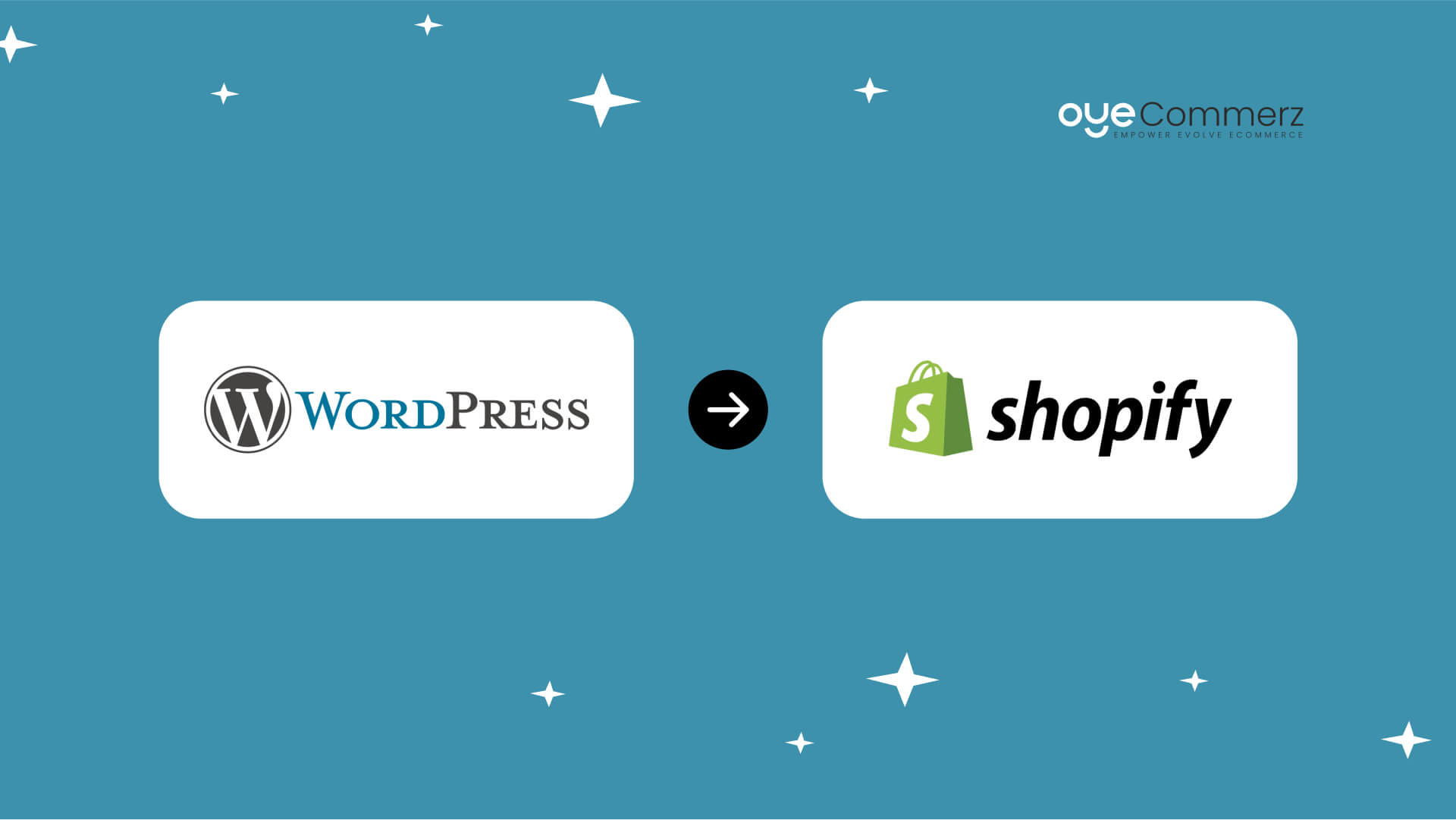Transitioning from WP to Shopify is an exciting step in optimizing your online store operations. As companies expand, choosing a solution that supports growth potential, user experience, and customization is essential. Shopify is widely recognized as a favorite for online merchants, providing superior flexibility, security, and ease of use. In this guide, we will delve into why this migration is a game-changer, discuss the benefits, and provide practical tips to ensure a smooth transition.
1. Top Reasons to Transition from WordPress to Shopify
The combination of WordPress and WooCommerce, has served countless e-commerce platforms. Nevertheless, as businesses scale, challenges like reliance on plugins, security vulnerabilities, and technical complexities can hinder growth. Shopify, specifically created for e-commerce, addresses these concerns with an all-in-one, intuitive solution. Real data back this shift—Shopify hosts over 4.4 million websites worldwide, with a documented 10% boost to sales conversion rates for numerous merchants after migration.
2. Shopify's Perks for Thriving Online Stores
Shopify’s powerful platform is tailored for expanding brands. Its standout features are:
- Seamless Customization: Shopify provides over 80 professionally designed themes.
- Integrated Tools: Capabilities such as Shopify Payments and built-in SEO save time and effort.
- International Expansion: Multi-currency support and localization features enable businesses to reach global markets.
Additionally, Shopify boasts an uptime rate of 99.98%, guaranteeing your website is always operational.
3. Preparing for WP to Shopify Migration
Prior to starting the migration process, assess your current store. Review product data, client information, and search engine rankings. Tools like Shopify’s Migration Kit or external tools can simplify this process. Create a comprehensive plan, making sure all assets—item details, images, and articles—are ready for seamless import.
4. Data Migration: A Critical Step
Transferring your data forms the foundation for a successful transition. When migrating from WP to Shopify, prioritize:
- Product Information: SKU, item summaries, and categories.
- Client Information: Emails, order history, and custom fields.
- SEO Optimization: Preserve meta tags, URLs, and forwarding paths to maintain search rankings.
Use apps like LitExtension to facilitate seamless migration while minimizing errors.
5. Tailoring Your Shopify Store to Fit Your Brand
Post-migration, personalizing your Shopify store ensures it reflects your business identity. Utilize Shopify’s intuitive page builder to create layouts with ease. Shopify's themes are mobile-responsive, providing a smooth user experience across platforms—a critical factor, given 74% of online shopping is generated by mobile users.
6. Maintaining SEO During Migration
Search engine optimization is crucial for maintaining your online presence during migration. Shopify is highly optimized for search engines with organized link formatting, built-in optimization tools, and smooth content management. Ensure:
- Set up URL forwarding for old URLs.
- Enhance updated content Shopify theme customization with keyword-rich content.
- Leverage plugins like Plug in SEO to track analytics post-migration.
7. Essential Tests After Migrating to Shopify
After finishing the transfer, conduct thorough testing.
Check:- Website speed (Shopify boasts faster speeds in contrast with WordPress).
- Payment integration reliability and checkout processes.
- Adaptability across devices.
Testing guarantees your store provides a smooth shopping experience from the start.
8. Real-Life Success Story
An example of effective platform switching is Gymshark, a fitness apparel brand that moved to Shopify. Post-migration, the company saw a 60% increase in mobile sales and reduced site downtime. This highlights the potential of Shopify in enhancing e-commerce growth.
9. Overcoming Common Migration Issues
Migration comes with challenges, such WordPress to Shopify comparison as information accuracy and reconfiguring custom functionalities. However, Shopify’s robust support and external professionals make overcoming these hurdles manageable. Collaborating with qualified Shopify developers helps guarantee a trouble-free transition.
10. Making the Switch: The First Step Toward Success
Switching from WP to Shopify represents a forward-thinking decision to online retail. By addressing scalability, streamlining operations, and improving buyer satisfaction, Shopify empowers businesses to succeed in competitive markets.
Conclusion
Transitioning from WP to Shopify offers a smart solution that can significantly boost your e-commerce success. With a well-structured strategy, the appropriate resources, and expert support, you can achieve new success milestones.
Ready to make the leap? Let’s discuss how our Shopify migration services can revolutionize your online store. Get in touch today, or consider: Can your business afford to miss out on Shopify’s growth potential?

Comments on “Effortless Transition from WordPress to Shopify: Your Ultimate Guide to E-commerce Success”